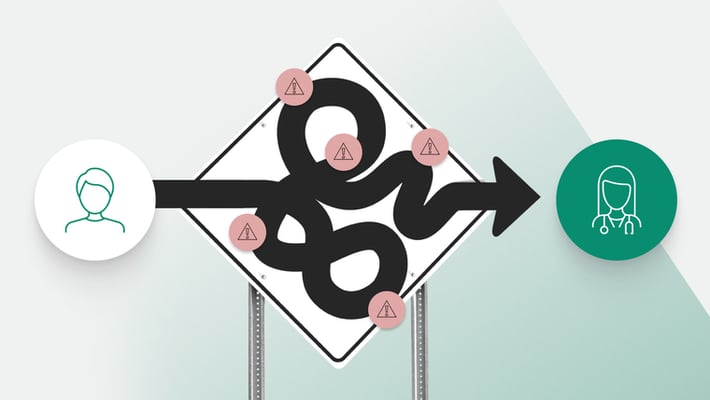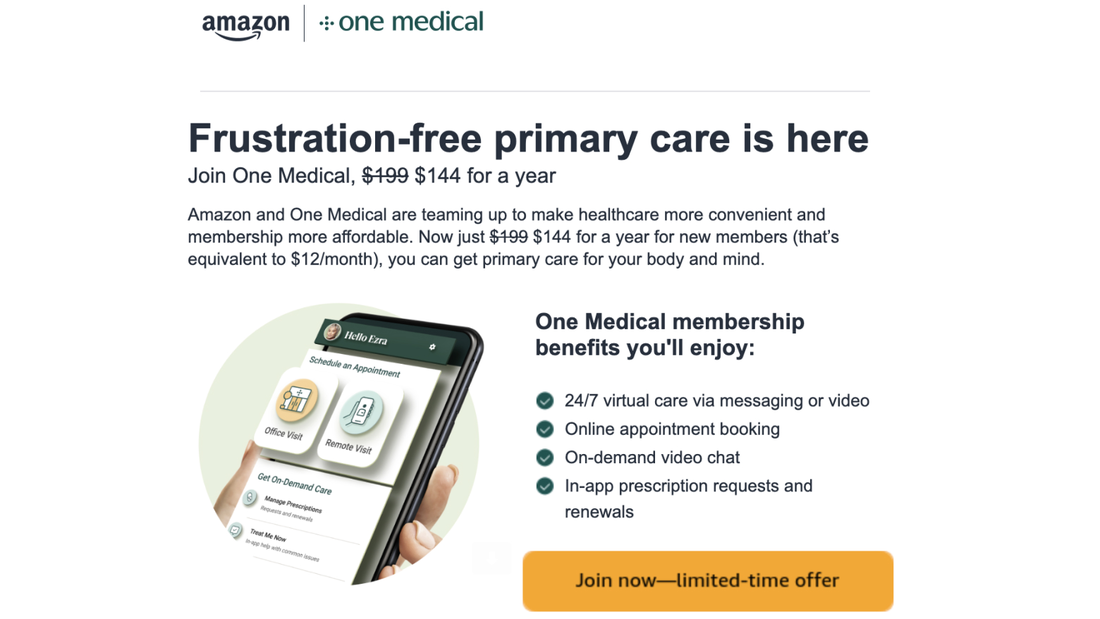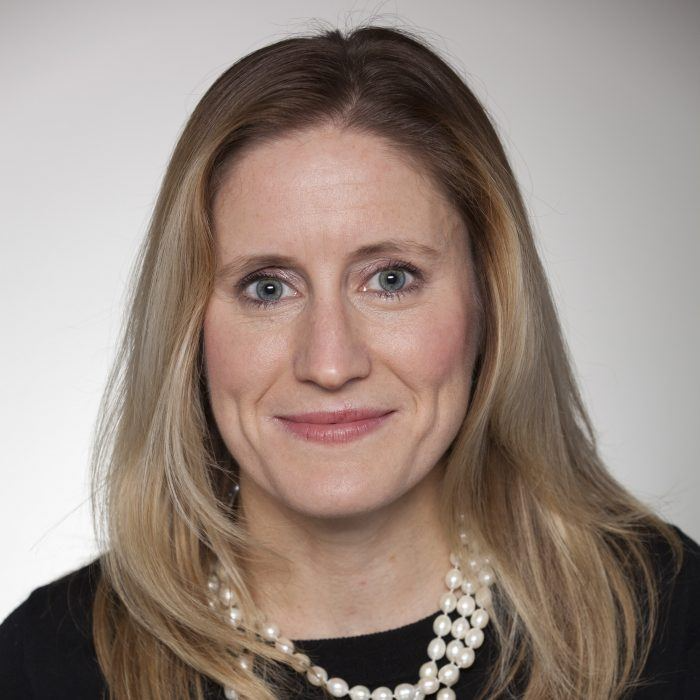
Empower your patients to take back control of their healthcare decisions by providing digital experiences that reduce friction – and exceed expectations.
It's no secret that consumers have higher expectations of their online experiences today than they did pre-pandemic. In fact, poor digital experiences were responsible for an estimated 8% loss in revenue across industries in 2021 – and, in healthcare, estimated revenue losses climbed up to 14%.
Patients' expectations of their healthcare journey are clear, but payers and providers are struggling to drive transformation.
Traditional healthcare organizations are making it difficult to find a provider, and access to those providers and available appointments continue to be a challenge. Meanwhile, payers are awash in massive amounts of information their members seek. This also makes it difficult for health plan members to find the right provider that accepts their insurance plan. It's even hard to find information about plans. Payers are seeking to be their members' trusted health advisor — but failing miserably.
On top of all of this is the economic macro environment: healthcare premiums have increased due to inflation, and commercial insurance plans leave members on the hook with higher deductibles for their care. Patients and consumers have higher out-of-pocket costs – and more choices than ever to find care that is convenient and affordable.
Finally, at the same time, non-traditional organizations are entering the market: Amazon, CVS, Walmart, and Google, among others. They are stepping into an industry that is broken and mending those gaps — taking patient volume with them. A recent email advertisement from OneMedical (now owned by Amazon) marketed "frustration-free primary care," hitting at the heart of what non-traditional organizations are trying to do: cut the friction out of the consumer experience, driving greater patient acquisition and consumer loyalty.

Friction is defined as "anything that causes people to waste their time, energy or money." Healthcare consumers waste their time searching for a doctor, only to call a phone number that ends up to be a fax line. Patients waste their time waiting weeks for an appointment or waiting for doctors who are running late for same-day appointments because providers don't have space in their schedules. Health insurance plan members waste their time seeking information about whether a provider accepts a specific insurance plan product – and care may be delayed as a result.
As consumers continue to make choices about where to spend their time and allocate their dollars post-pandemic, they will opt for frictionless experiences. Consumers will give more loyalty to healthcare experiences that are easier to find, more easily accessible, and more digital-first.
Organizations like Amazon and Walmart know and understand this. They've developed a digital-first approach to understanding data and consumer experience. This approach has enabled these organizations to draw greater patient volume, thanks to their ability to leverage technology and consumer insights to deliver consistently better digital experiences across the board.
So, with these considerations in mind: what should providers and payers consider to reduce friction and ensure the consumer is empowered to choose you – and not Amazon – for their care?
IT and marketing teams need to work closely together. IT may own the technology within your organization, but marketing teams are increasingly responsible for consumers' digital experiences. An excellent working relationship between these teams will ensure the right technology investments are made and the correct data foundations are created. Ultimately, this cohesiveness better positions your organization to drive delightful digital experiences – now, and in the future.
Organize your provider data. Set up a provider data governance committee to ensure you are regularly evaluating your provider data and adding to your foundation of who works where and treats what conditions. An accurate taxonomy, an up-to-date list of providers, and your providers' availability are your organization's inventory. Someone within your organization needs to own and manage this with a regular cadence.
Conduct regular mystery shopping experiences. Put yourself in your patient and consumer shoes and "mystery shop" experiences – but not with your direct competitors. Instead, look to Amazon, Walmart, and other brands that provide exceptional customer and consumer experiences. What do they do right? How can you translate that into the healthcare experiences you offer?
As healthcare providers and payers try to meet consumer expectations, leveraging new technology seems like an obvious solution. But the truth is that not all tech stacks are built with a cohesive consumer experience in mind – in fact, disjointed consumer experiences are often a direct consequence of siloed teams, tools, and databases.
The best way to reform patients' digital experiences is to reform your technology. Invest in solutions that adapt and scale to your business needs. Say goodbye to legacy systems and hello to flexibility with solutions from Yext.
With Yext, you have the flexibility you need to build custom experiences your way — using a best-in-breed approach to vendors. The end result is a better experience for your customers that drives retention and revenue.
After partnering with Yext, OhioHealth improved the digital patient experience by leveraging the Yext Knowledge Graph and Listings solutions to manage information on their brand, facilities, and physicians.
As OhioHealth's Digital Media Manager, Yvonne Rayburn says, "When patients are searching online, especially for something like urgent care, they're searching for it because they need it right now, and the information really better be correct. That's where Yext is super helpful for us. We want to provide excellent patient care across digital channels."
Visit our case study today to learn how OhioHealth and Yext partnered together to increase click-through rates by 78% and search views by 72%, and how this impacted the brand – and its patients – for the better.
Case Study: OhioHealth Perfects Practitioner Listings and Manages Events with Yext

The original version of this page was published at: https://www.yext.com/blog/2023/04/reducing-friction-in-patients-digital-experiences
Yext (NYSE: YEXT) helps organizations answer every question about their business. Yext's Answers Platform collects and organizes content into a Knowledge Graph, then leverages a complementary set o... Read more
Remember renting movies at Blockbuster?It used to be a field trip, right? Go out to dinner on a Friday or a Saturday night, then go to Blockbuster and roam the aisles for videos (VHS, ...read more
The pandemic has taught us that people now expect enhanced digital experiences. After all, some of the most utilized websites during the pandemic – Amazon and Google – ...read more
In an article about how to advertise during a pandemic, The Atlantic reports that consumers are “grateful for the information about pandemic-related services and ...read more
When Bell Laboratories designed the “Audrey” system to recognize the numbers 1 to 10 when spoken by one (and only one) voice in 1952, it was a big deal — one that ...read more